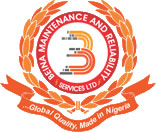INTRODUCTION:
In the world of Total Productive Maintenance (TPM), the concept of Autonomous Maintenance stands as a pivotal pillar for empowering frontline operators and enhancing equipment reliability. As one of the eight fundamental pillars of TPM, Autonomous Maintenance plays a crucial role in fostering a culture of ownership, proactivity, and continuous improvement within manufacturing organizations. In this blog post, we’ll delve into the first pillar of TPM: Autonomous Maintenance. We’ll explore its significance, principles, and practical strategies for empowering operators to take ownership of equipment care and maintenance.
UNDERSTANDING AUTONOMOUS MAINTENANCE:
Autonomous Maintenance, often abbreviated as AM, represents a shift in mindset from reactive to proactive maintenance practices. It involves empowering frontline operators to assume responsibility for the routine care, inspection, and minor maintenance of their equipment. By engaging operators in the preservation of equipment integrity and functionality, Autonomous Maintenance aims to prevent breakdowns, reduce downtime, and optimize overall equipment effectiveness (OEE).
KEY PRINCIPLES OF AUTONOMOUS MAINTENANCE:
- Equipment Ownership: Autonomous Maintenance instills a sense of ownership among frontline operators for the equipment they operate on a daily basis. Operators are encouraged to develop a deep understanding of their equipment’s function, performance, and maintenance requirements, fostering a sense of pride and accountability
- Daily Checks and Inspections: Operators perform routine checks and inspections as part of their daily tasks to detect abnormalities, anomalies, or signs of potential problems. These checks typically involve visual inspections, lubrication, cleaning, and tightening of components, allowing operators to identify and address issues before they escalate.
- Basic Equipment Care and Restoration: Beyond routine inspections, operators are trained to perform basic maintenance tasks such as cleaning, lubricating, and adjusting equipment settings to maintain optimal performance. In the event of minor breakdowns or deviations from standard operating conditions, operators are empowered to troubleshoot and restore equipment functionality promptly.
- Standardization and Documentation: Autonomous Maintenance emphasizes the importance of standardizing maintenance procedures and documenting best practices to ensure consistency and repeatability. Standardized work instructions, checklists, and visual aids help operators perform tasks accurately and efficiently, regardless of shifts or personnel changes.
PRACTICAL STRATEGIES FOR IMPLEMENTING AUTONOMOUS MAINTENANCE:
- Operator Training and Skills Development: Provide comprehensive training to operators on equipment operation, maintenance techniques, and troubleshooting procedures. Invest in skill development programs to enhance operator competencies and confidence in performing autonomous maintenance tasks.
- Create a Supportive Environment: Foster a culture of collaboration, communication, and mutual support among operators, maintenance technicians, and management. Encourage open dialogue, feedback, and knowledge sharing to facilitate continuous improvement and problem-solving.
- Empower Operators with Tools and Resources: Equip operators with the necessary tools, supplies, and resources to perform autonomous maintenance tasks effectively. Provide access to lubricants, tools, spare parts, and maintenance manuals to facilitate timely interventions and prevent disruptions to production
- Establish Performance Metrics and Goals: Define key performance indicators (KPIs) such as mean time between failures (MTBF), mean time to repair (MTTR), and OEE to measure the effectiveness of Autonomous Maintenance activities. Set achievable goals and targets for reducing downtime, improving equipment reliability, and enhancing overall performance.
CONCLUSION:
Autonomous Maintenance, the first pillar of Total Productive Maintenance (TPM), empowers frontline operators to play an active role in equipment care and maintenance. By embracing the principles of equipment ownership, daily checks, standardization, and continuous improvement, organizations can unlock the full potential of their workforce and equipment assets. As Autonomous Maintenance becomes ingrained in the organizational culture, it lays the foundation for sustained efficiency, reliability, and competitiveness in today’s dynamic manufacturing landscape.



